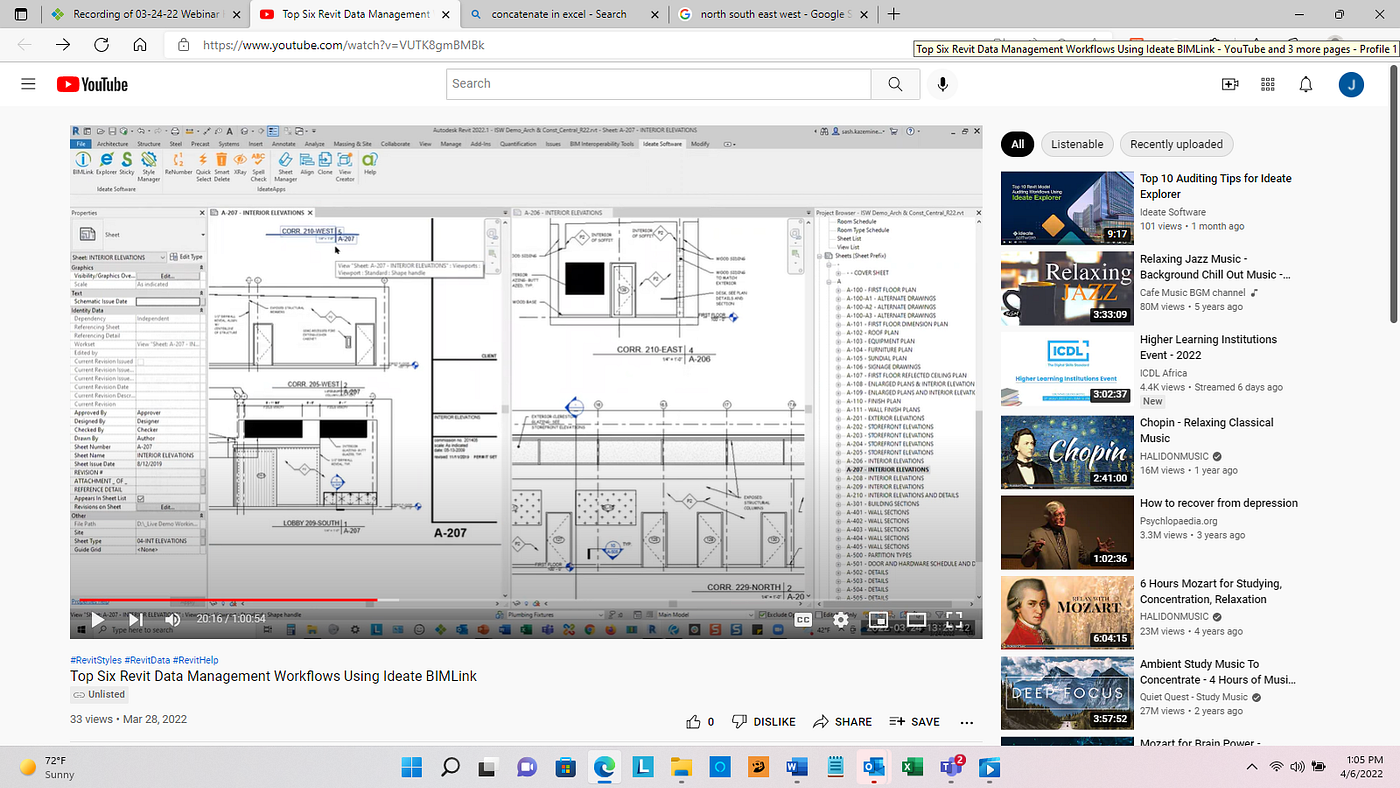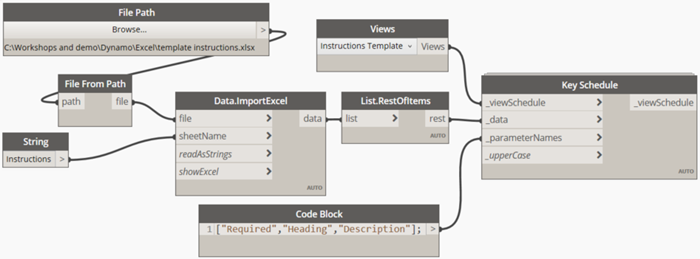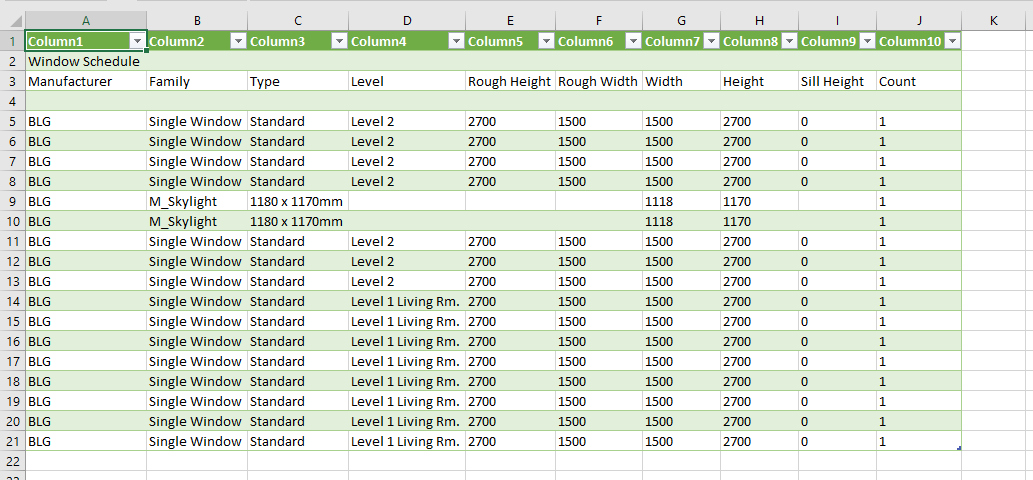Optimize Your Process with Revit Add Ins and Plugins
Wiki Article
Revit Excel Assimilation Demystified: Simplifying Operations for Boosted Project Control
Are you tired of having problem with ineffective project sychronisation and time-consuming workflows? Look no more, because Revit Excel Integration is here to debunk the process and improve your tasks. With this powerful tool, you can enhance job control and remove the inconvenience of manual information access. In this write-up, we will assist you through the relevance of Revit Excel Integration, show you how to simplify workflows, and give ideal techniques for successful integration. Prepare to revolutionize your job coordination with ease.The Value of Revit Excel Combination
You require to understand the relevance of Revit Excel integration to efficiently improve your process and improve task sychronisation. The integration of Revit, an effective building info modeling (BIM) software program, with Excel, a widely made use of spread sheet program, gives numerous advantages for architects, designers, and building and construction specialists.

By integrating Revit with Excel, you can get rid of hand-operated information access and reduce the danger of mistakes. This not just conserves time but also makes sure precision in your project paperwork. You can upgrade data in Excel, and it will automatically upgrade in Revit, maintaining consistency throughout your job.
In Addition, Revit Excel combination improves project coordination by making it possible for effective partnership among employee. With information integrated in between Revit and Excel, everyone can access one of the most updated information and collaborate seamlessly. This promotes smoother interaction, decreases conflicts, and improves total task effectiveness.
Exactly How to Improve Workflows With Revit Excel Integration
Optimize your process by seamlessly attaching Revit and Excel to simplify your process. By integrating these 2 effective tools, you can boost task control and enhance efficiency in your job. With Revit Excel combination, you can easily move data between the two platforms, permitting smooth communication and cooperation.

One more advantage of Revit Excel combination is the capability to create personalized reports and examine data better. With Excel's durable attributes, you can do sophisticated estimations, create charts and charts, and produce extensive records based on the data from your Revit designs. This allows you to make and get useful understandings notified choices throughout the job.
Enhancing Task Coordination With Revit Excel Integration
By seamlessly linking your style software application with effective information evaluation tools, you can considerably improve the coordination of your tasks. Revit Excel assimilation enables you to improve your operations and improve job sychronisation by getting rid of hand-operated information access and reducing errors. With this integration, you can quickly move information in between Revit and Excel, ensuring that all project information is up to date and accurate.Among the essential benefits of Revit Excel combination is the capability to import and export data between the two software application effortlessly. This indicates that you can quickly import existing job data from Excel into Revit, conserving you time and initiative in coming back details. In a similar way, you can export task information from Revit to Excel, enabling you to carry out sophisticated analysis and computations using the More Help powerful attributes of Excel.
Additionally, Revit Excel integration allows you to produce dynamic web links between the 2 software program (revit tools). This implies that any adjustments made in Revit will immediately update in Excel, and the other way around. This guarantees that all job stakeholders are collaborating with one of the most updated information, boosting job coordination and lowering the danger of mistakes
Conquering Challenges in Revit Excel Assimilation
When getting rid of challenges in the combination of Revit and Excel, it is essential to make certain seamless information transfer and lessen errors. One usual difficulty is the compatibility of information formats in between Revit and Excel. To tackle this, you can use plugins or add-ins that promote the conversion of data from one style to another. These tools aid maintain the honesty of the data throughout the transfer process.Another difficulty is the absence of synchronization between Revit and Excel. It's critical to establish a clear process that makes certain both platforms are updated in real-time. This can be accomplished by utilizing cloud-based collaboration tools or establishing a system for routine information syncing.
Managing huge datasets can likewise be problematic. Revit and Excel have various capacities when it pertains to handling large quantities of data. To conquer this obstacle, you can divide the data right into smaller sized, convenient chunks or use data filtering methods to focus on certain locations of passion.
Lastly, human error can result in inconsistencies between Revit and Excel data. It is very important to train employee on the combination procedure and establish quality assurance steps to catch any errors. Normal audits and cross-checks can aid recognize and fix any kind of inconsistencies.
Ideal Practices for Effective Revit Excel Assimilation
To ensure effective combination of Revit and Excel, it's important to adhere to some best techniques that will assist streamline your process and minimize mistakes. In addition, when connecting Excel data into Revit, make certain that the data is tidy and free from any format issues that could cause mistakes.Another vital practice is to regularly update your Excel information in Revit. This can be conveniently achieved by establishing a clear process for updating the linked information. Make it a practice to assess and upgrade the information at regular periods, specifically when changes are made to the project. This will certainly aid keep your data precise and as much as day.

Verdict
So, there you have it - revit Excel integration doesn't have to be a challenging task. By simplifying your workflows with this powerful about his combination, you can enhance project coordination and achieve greater efficiency. Remember to overcome any challenges that might emerge and adhere to ideal methods for successful integration. With revit Excel integration debunked, you'll be well on your means to maximizing the possibility of these view publisher site devices and taking your jobs to new heights.You can export your Revit routines to Excel, make changes or updates in Excel, and after that import the upgraded information back into Revit with just a few clicks. Revit Excel integration permits you to improve your workflows and boost job coordination by removing hands-on data entry and reducing mistakes. With this integration, you can conveniently transfer information between Revit and Excel, ensuring that all task info is up to day and exact.
You can export job information from Revit to Excel, enabling you to execute sophisticated analysis and computations using the effective features of Excel.
Furthermore, when connecting Excel data into Revit, ensure that the information is clean and cost-free from any formatting concerns that could trigger errors.
Report this wiki page